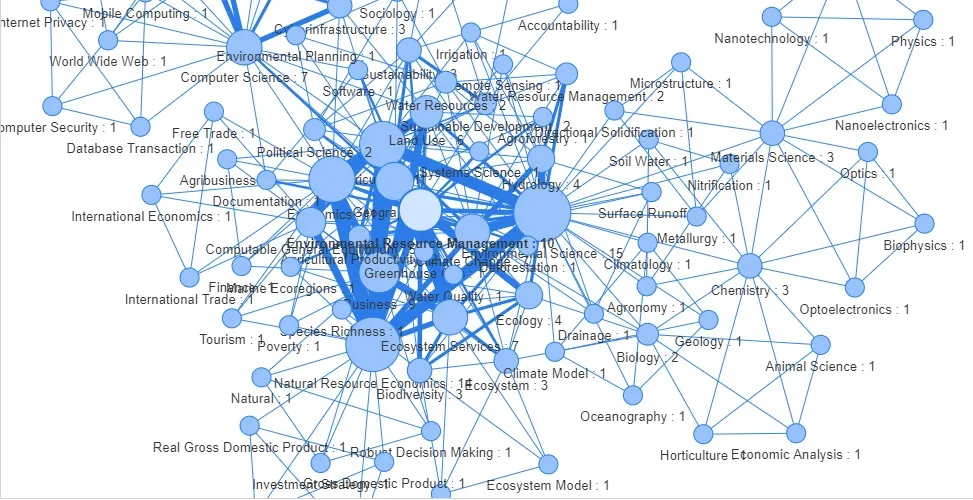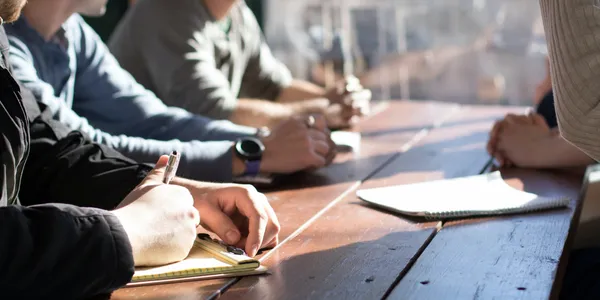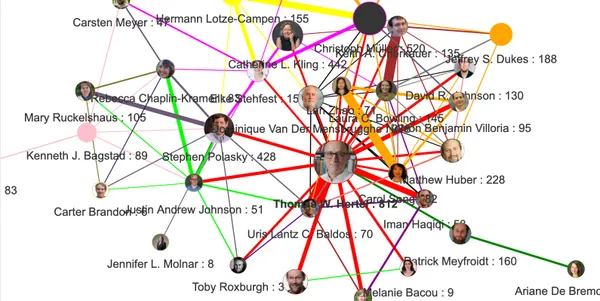AccelNet Mapping Scientific Collaborations
Scientific Collaboration Network Evaluation & Strategy Using Graph Analysis

How well do you know your network?
Learning and applying network graph analysis will help the AccelNet partners to:
- Improve their understanding of scientific collaborations currently happening within their networks
- Leverage the strength of expertise and connectedness within their networks to help accomplish their goals
- Create strategies to address gaps of expertise and connectedness to strengthen within their networks
- Identify and evaluate other networks to collaborate and connect with to optimize their network-of-networks
- Assess and report the growth and development of their networks over time
Workshop Series

Workshop 1: Data Sources for Modeling and Graphing Scientific Collaborations
Learning objectives: Participants will learn about commonly available data for assessing scientific collaboration networks and how they can curate and collect that data for their own team. Using the examples of GLASSNET and MultiNet, we will show how scientific publication data, survey data, and other observational data can be used to both evaluate change efforts and to guide decision making for future activity. [recording, in-session activity, after-session activity]
Workshop 2: Tools for Analyzing and Visualizing Scientific Collaboration Networks
Learning objectives: Participants will learn about three major approaches to using their network collaboration data to assess their collaborations: (1) visualizing network data, (2) finding important actors (centrality), and (3) assessing cohesiveness and finding potential opportunities (such as structural holes) to increase cohesiveness. [recording, Sci2 QuickStart, Visone QuickStart, after-session activity]


Workshop 3: Evaluating the Growth of Your Scientific Network and Strategic Decision-Making
Learning objectives: Participants will learn (1) what kinds of questions related to their AccelNets can be answered through network graph analysis; (2) how to establish a baseline scientific collaboration network graph using GLASSNET & MultiNet as examples; (3) practical considerations for quantifying network analyses into measurable units; and (4) how to utilize the assessment template for annual reporting to NSF and for informing strategic decision-making to guide the growth and development of their AccelNets. [recording, Sci2 QuickStart, Visone QuickStart, after-session activity]
2023 Workshop Cohort
Gabriel Arellano
Alliance for Tropical Forest Science (ATFS)
Bassel Daher & Shanon Hankin
ALSNet
Leslie Ford & Christopher Scott
US-Africa Sustainable Food Systems through Water-Energy-Food Nexus Networking (SustainFood)
Jessica Huszar
International Network for Bio-Inspired Computing
Gemma Jiang
Extreme Light in Intensity, Time, and Space Network (X-Lites)
Jasmine Lau
Institute for Complex Adaptive Matter (ICAM)
Sheryl Murdock
Crustal Ocean Biosphere Research Accelerator (COBRA)
Jennifer Russell
VR(Ex)Change
Abby Rutrough & Susan Tsang
Global Union of Bat Diversity Networks (GBatNet)
Leslie Smith
Implementing a Deep Ocean Observing Strategy (iDOOS)
Christine Tang
Transboundary Groundwater Resilience (TGR)
Instructors
This workshop series has been made possible by the support of the National Science Foundation’s Accelerating Research through International Network-to-Network Collaborations (AccelNet), Award #2233430.

